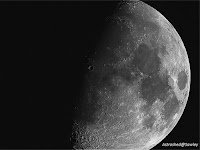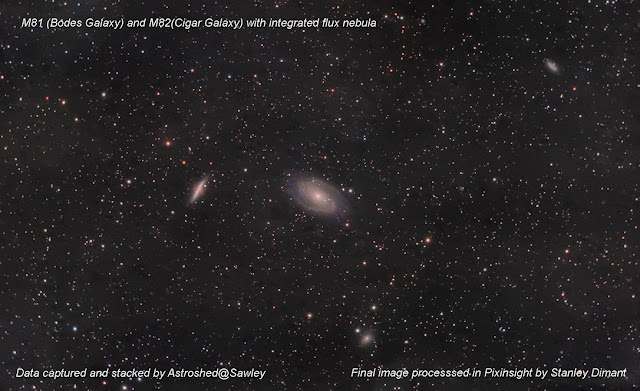Shoot the Moon
Shoot the Moon
It's a common sight in the night sky..... too common for some astronomers who always crave dark skies for deep sky imaging. I get the frustration; especially when a full moon coincides with the first (and only) clear night for months. But I would challenge my astronomer colleagues we with this simple thought. How many of today's astronomers interest in the beauty of the night sky started with their first look at the moon through a pair of binoculars? Don't we owe something to the moon for getting us into this hobby in the first place? You have to work with it, avoid it if you must but if you can't, by all means pay it a visit with your telescopes and remind yourself where it all started. Just a thought.
A thumbnail crescent moon - my favourite profile
For me, the best times to observe and image the moon are in the early waxing and late waning phases. There is nothing more evocative than an early morning thumbnail crescent moon, close to the horizon with an early riser like Venus visible at sunrise, punctuating the dawn sky. Nature at it's most stunning, in my opinion. I did try on my last holiday aboard The Queen Victoria. Arriving into Naples with Mt Vesuvius in the distance and the island of Capri in full view from the port side of the boat the moon and Venus shining brightly really did complete the scene..And one day, I will have my camera and tracking mount with me to do a better job
Close up and personal
The moon makes a good landscape great, no doubt. But is a great subject up close. It's a satisfying object to observe and marvel at. All those craters and seas brought into sharp relief across the shadow of the terminator show the scars of a turbulent and violent history. You can't help but wonder if the moon looks that battered and bruised, isn't the Earth just the same? The answer is of course yes - but not always evident as we're covered with water and vegetation.Satellite imagery of Earth has revealed our own craters, including the impact sites likely to be the place hit by a comet or meteor that caused the extinction of the dinosaurs. I did a live broadcast on facebook for my friends and family, taking the feed from my planetary camera through my telescope and giving a close up tour of the moon. A friend did ask on the live feed if the moon is still getting clobbered today and I reflected that this must be the case, although we don't see the dark side that's taking most of the hits.I took some frames from this live feed to produce close up images of some well known features such as the Copernicus and Plato craters. Fascinating structures.









Comments
Post a Comment